People often think that a white, bright smile means that you are healthy, confident, and clean. Teeth can get yellow or damaged, though, if you smoke, drink coffee, tea, or red wine every day, or if you smoke. Professional methods for teeth whitening do work, but they can be pricey and sometimes painful. You may already have things in your kitchen that you can use to whiten your teeth safely and naturally.
Understanding Tooth Discolouration
Before you try to whiten your teeth, you should know why they get stained in the first place. Stains come in two main types:
- Extrinsic stains: Surface-level stains that are the result of inadequate oral hygiene, tobacco, food, or alcohol.
- Intrinsic stains: A deeper discolouration within the tooth that is frequently the result of trauma, medications, ageing, or excessive fluoride exposure.
Stains that come from the outside are easiest to treat at home. Intrinsic spots might need to be treated by an expert.
Natural Ingredients That Help Whiten Teeth
1. Baking Soda And Hydrogen Peroxide
If you want to get rid of surface spots on your teeth, baking soda can help. When mixed with hydrogen peroxide, which is a natural bleach, it makes a strong, brightening mix.
How To Use:
- To make a paste, mix 1 teaspoon of baking soda and 2 teaspoons of hydrogen peroxide.
- Use this mixture to brush your teeth for one to two minutes, and then rinse them well.
- To keep your enamel from getting damaged, use this treatment two to three times a week.
Too much use can make metal sensitive or wear away. Hydrogen peroxide that is 3% or less should always be used.
2. Oil Pulling With Coconut Oil
Swishing oil around in your mouth to get rid of germs and toxins is an old Ayurvedic technique called “oil pulling.” Coconut oil has lauric acid in it, which kills germs and lowers plaque, which is a common reason why teeth turn yellow.
How To Use:
- Take out one tablespoon of pure coconut oil.
- Take 15 to 20 minutes to swish it around in your mouth. Do not swallow.
- Throw it out, brush your teeth, and wash your mouth with warm water.
Over time, doing this every day can make your teeth look better and make them a little whiter.
3. Activated Charcoal
Activated charcoal can soak up a lot of liquid and stick to things that stain teeth. It might help get rid of surface spots, but be careful when you use it.
How To Use:
- Put some water on your toothbrush and then dip it in activated charcoal powder.
- Brush your teeth slowly for two minutes.
- Rinse really well.
Once or twice a week, use this cure. If you use charcoal too much or with too much force, it can damage your enamel.
4. Apple Cider Vinegar
People know that apple cider vinegar (ACV) can naturally bleach clothes and kill germs in the mouth.
How To Use:
- Add 2 parts water to 1 part apple cider vinegar.
- Swish for one minute to thirty seconds.
- After you rinse, brush your teeth.
Too much ACV can wear away tooth enamel because it is very acidic. Use it no more than once a week, and always dilute it.
5. Strawberries And Baking Soda
Malic acid, which is found in strawberries, can help get rid of surface spots. They make a natural whitener paste when mixed with baking soda.
How To Use:
- One ripe strawberry should be mashed and mixed with half a teaspoon of baking soda.
- You can use a toothbrush or your finger to put the mixture on your teeth.
- Post-five-minute wait, wash and brush your teeth.
The enamel can be worn down by too much acid and rough use, so only do this once a week.
Dietary And Lifestyle Adjustments
If you keep eating things that stain, even the best treatments won’t work. To keep your smile white:
- Stay away from or drink less pop, coffee, tea, and red wine.
- For dark drinks, use a straw.
- Follow up with a rinse or brush after eating acidic or bright foods.
- Don’t smoke or chew tobacco anymore.
Oral Hygiene Habits For Maintaining Whiteness
Taking care of your teeth regularly can keep them white and stop them from getting stained.
- Use fluoride toothpaste or whitening toothpaste that doctors have cleared twice a day.
- Every day, floss to get rid of plaque between your teeth.
- Every three months, get a new toothbrush.
- Every six months, you should go to the dentist for cleanings and tests.
Precautions And Potential Side Effects
Even though home treatments sometimes work, they also come with some risks:
- Enamel erosion: A lot of teeth whiteners are acidic or rough on the enamel.
- Toxic tooth sensitivity: Too much use can make teeth sensitive and painful.
- Gum irritation: Incorrect application might result in redness or burning.
Always begin slowly and watch how your gums and teeth react. These ways won’t change the colour of your crowns, fillings, or veneers if you have them.
Myths About Home Whitening Remedies
Some famous do-it-yourself ways to whiten teeth are not only useless, they could even be harmful:
- Lemon juice: Very acidic and bad for teeth.
- Banana peels: There is no solid proof that they can help whiten teeth.
- Whitening toothpaste: Can assist marginally, but won’t outperform professional or natural therapies over time.
Conclusion
If you use them right, teeth-whitening products you can get at home can be a safe and inexpensive way to make your smile look better. Fresh foods like peaches, baking soda, and coconut oil can get rid of surface spots and make your teeth healthier. But balance is important to keep your teeth from getting hurt. Talk to a dentist if you want darker stains or faster effects.



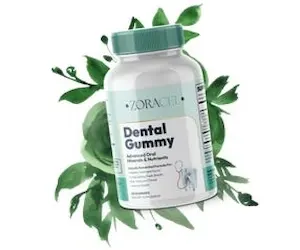
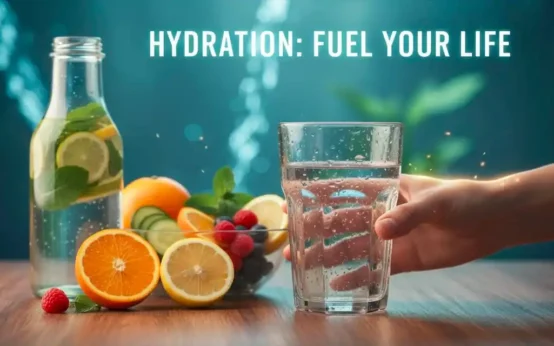 Importance of Hydration for Your Brain, Body, and Everyday Energy
Importance of Hydration for Your Brain, Body, and Everyday Energy 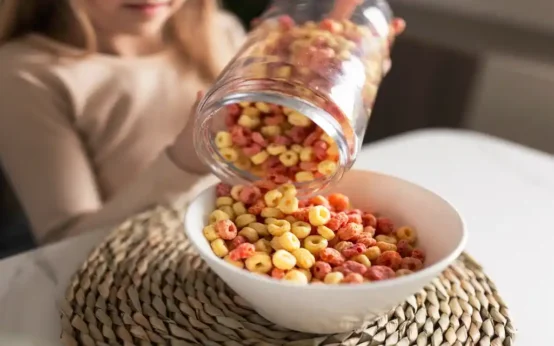 Healthiest Breakfast Cereal for Children
Healthiest Breakfast Cereal for Children  Anxiety Management Techniques
Anxiety Management Techniques  How To Remove Sun Tan From Hands
How To Remove Sun Tan From Hands 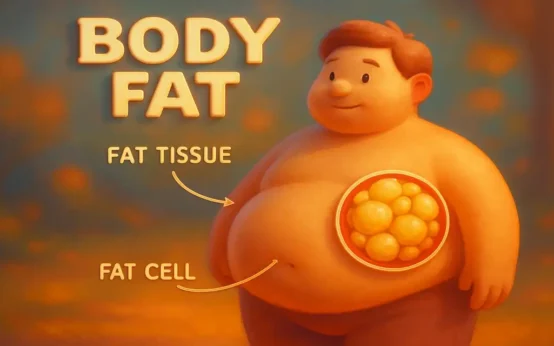 What Makes Fat in Our Body?
What Makes Fat in Our Body? 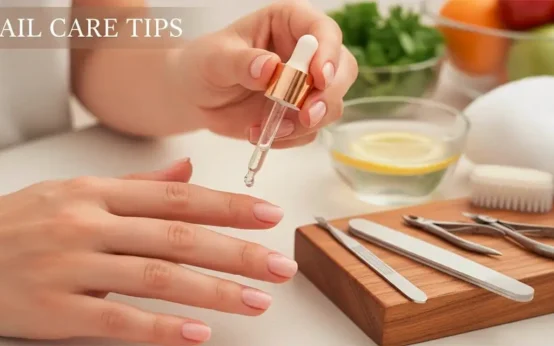 How to Take Care Your Nails
How to Take Care Your Nails